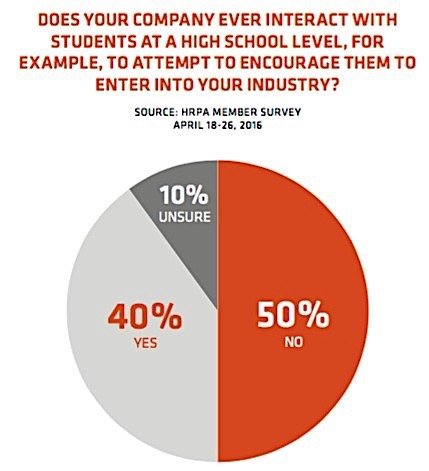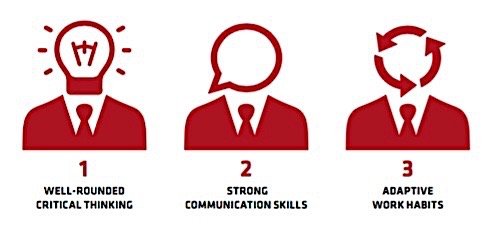
Ontario’s education system is failing to prepare students to enter the workforce, and employers are finding it increasingly difficult to find suitably skilled workers. This in spite of the fact that Ontario turns out more graduates with post-secondary education than any country in the OECD. Many of those highly educated graduates earn less than the national median income, however, and are ill-prepared for the jobs they are hired to do. In fact, too many of them choose the wrong field of study in the first place. Employers are less than satisfied with many of the workers they hire. A whole new approach to student guidance in education, one in which a new “information infrastructure” is designed to identify labour market needs, improve student guidance counselling, and improve the quality of learning, is needed in Ontario.
So finds CIBC economist Benjamin Tal in a new report prepared with the Human Resources Professional Association (HRPA), the body that regulates the practice of HR in Ontario. The report, Strengthening Ontario’s Workforce for the Jobs of Tomorrow, calls for more collaboration, communication and cooperation between industry, educators and government to create a stronger workforce. “This is an absolutely critical issue for our members, for our economy, and for our future prosperity” said HRPA CEO Bill Greenhalgh in a statement.

Astonishingly, fewer than half of HR professionals (43 per cent) consider that the employees they have hired over the past year were adequately prepared for the jobs they were hired for. There is a “vast gap” between what is taught in Ontario colleges and universities and what is needed in an “ever-shifting economy.” To cope with a world in which change is rapid and constant, students must be prepared “for jobs that have not yet been created, to use technologies that have not yet been invented,” says an OECD report. But this is not happening in today’s Ontario, where, according to an HRPA survey, employers employees who are creative, well-rounded critical thinkers with problem-solving skills, imagination, and resilience; strong communications skills and the ability to work in complex and evolving environments.
At the same time, Ontario is losing out in terms of global competitiveness because business has not kept pace with the rapid changes overtaking the economy. Citing a Deloitte report on human capital, Tal notes that Canada ranks twenty-third in the world on the ability to innovate, and only eighteenth in the world for overall technological readiness.

Despite the high priority given to education in Ontario, which has the highest level of post-secondary attainment among the OECD countries, students are not getting the best career advice, nor, in many cases, the best training. Students therefore have trouble finding suitable employment, and employers can’t find properly trained workers. One study, the report says, found that one in three Canadian graduates is in a career that is unrelated to his or her field of study. Another found that many students earn multiple post-secondary degrees and certificates in an attempt to gain the skills necessary to get a job. This skills gap cost the country $24.3 billion in lost economic activity last year, according to the Conference Board of Canada.
Three main challenges to closing the skills gap.
The HRPA report identifies three main areas in which government, educators and business need to cooperate to address the current shortcomings in Ontario’s job market training. First, students must be aimed in the right direction, given accurate labour market information and properly supported so they can make informed decisions. The existing “patchwork” of federal, provincial, local and community sources of labour market data, which too often confuses students, must be reformed so that it sorts occupations by future demand.

Second, education and training programs, including workplace training, must be strengthened, so that the existing workforce has the skills needed to succeed in the new economy. Government, industry and educational institutions should collaborate more, to ensure that curriculum content stays relevant to the actual needs of industry. It has been said at the World Economic Forum that technology is changing so quickly that nearly half of what a student learns in their first year of post-secondary education is out of date by the time he graduates.
Third, the foreign credential recognition framework must be improved so that businesses can make the best use of foreign trained professionals. A pre-qualification process by which the Government of Canada would verify people’s stated occupation rather than relying on self-declaration is one possible approach, one that would ensure that newly arriving workers would meet the needs of employers and are ready to work as soon as they arrived. The importance of a better system of foreign credentials recognition can be seen when one considers that almost all of Ontario’s population growth (89 per cent) in coming years will come from net migration.
As for the skilled trades, which “struggle” to attract workers in Ontario despite high demand, Tal says they should appeal to students by highlighting the financial benefits and the satisfaction of working with advanced technologies in such work. Greater use of apprenticeship and coop programs would also support the skilled trades. With approximately 250,000 skilled tradespeople set to retire over the next ten years, it will be critical to replace them.
































